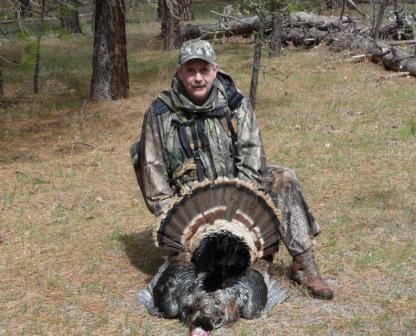I shot a big Tom last week and we had him for Thanksgiving in April. Wild turkey is extremely lean meat, as are most game birds.
They are flavorful but can be a bit dry if not prepared correctly. The most important step is brining the turkey. Refer to my recipe for brining chickens. A large wild turkey should sit in the brine overnight.
When the turkey is initially prepped it should be quickly plucked and gutted. Save the liver and heart.
Ingredients
Wild turkey, skin on or skinned
1 stick of butter
½ lb salt pork
Meat injector
2 cups chicken stock
½ onion, rough chopped
1 carrot, rough chopped
1 stalk celery, rough chopped
Large roasting pan
Heavy duty aluminum foil
¼ cup Seasoning mix
Preparation
After thawing the bird slowly in the refrigerator wash it off in cold water and plunge it into a brine solution of salt, vinegar, sugar, and water to completely cover the bird. Brine overnight. Remove the bird from the brine and wash in cold water again. Check carefully for any shot entry spots and feel around for shot. Carefully pry out any shot if you find it.
Remove the leg/thigh from the body of the bird and place them on each side to prop the bird up. Cover with stock so the tough leg/ combination will be tender. Place the bird in a roasting pan, directly on the pan, not in a rack. Add the cut vegetables. Melt the butter. Begin injecting the bird in various locations using up all the butter. Pour any remaining butter all over the cold bird. The butter should solidify almost immediately. Season the bird with the seasoning mix inside and out, especially on the bottom of the bird. Slice the salt pork into very thin slices and drape them over the bird, including over the legs. You can substitute bacon for the salt pork but blanch the bacon first to remove some of the smoke flavor.
Tightly cover the bird and roasting pan with aluminum foil. Roast in a 335 degree F oven. Roast for about 4 hours. Remove the foil for the last few minutes. The internal temperature should be 170 F.
Turkey gravy
Make a blond roux (equal parts of flour and fat by weight, cooked over medium-high heat for about 5 minutes. Do not burn)
Add the strained stock form the roasting pan whisking continuously. Remember the rule for no lumps, cold stock to hot roux – hot stock to cold roux. Thicken the gravy. Add 1 TBS sherry. Season to taste. Darken with a little kitchen bouquet if you like.






